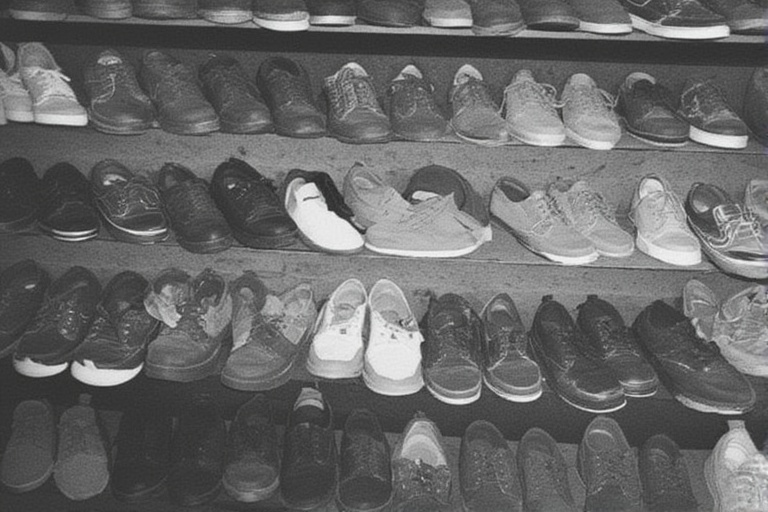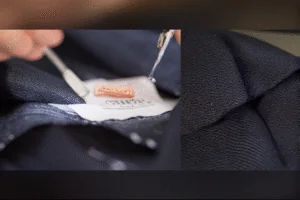
Payless Shoes from 1982: A Nostalgic Journey Through Affordable Fashion
Introduction to Payless Shoes from 1982
In the vibrant landscape of 1980s fashion, Payless Shoes from 1982 emerged as a beacon of affordability and style. Founded in 1956, Payless ShoeSource had already established itself as a household name by the early 1980s, offering budget-conscious consumers access to trendy footwear. The year 1982 marked a pivotal moment for the brand, as Payless Shoes from 1982 captured the essence of the era’s eclectic fashion while maintaining its commitment to accessibility. This article delves into the history, cultural impact, and enduring legacy of Payless Shoes from 1982, exploring how they shaped the footwear industry and left an indelible mark on pop culture.
The Rise of Payless ShoeSource in the Early 1980s
By 1982, Payless ShoeSource had grown from a small Kansas-based retailer to a nationwide chain, with hundreds of stores offering Payless Shoes from 1982 to a diverse customer base. The brand’s mission was simple yet revolutionary: provide stylish, quality footwear at prices that didn’t break the bank. In an era defined by bold fashion choices—think neon colors, leg warmers, and oversized silhouettes—Payless Shoes from 1982 catered to consumers who wanted to stay on-trend without spending a fortune.
The early 1980s saw Payless capitalize on the growing demand for affordable fashion. Payless Shoes from 1982 included a wide range of styles, from classic loafers and pumps to trendy sneakers and boots, reflecting the dynamic spirit of the decade. The brand’s ability to offer fashionable footwear at low prices made Payless Shoes from 1982 a go-to choice for families, students, and young professionals alike.
Fashion Trends and Payless Shoes from 1982
The 1980s were a melting pot of fashion influences, and Payless Shoes from 1982 mirrored these trends with remarkable agility. The decade was characterized by bold experimentation, with influences from punk, new wave, and preppy styles dominating the scene. Payless Shoes from 1982 embraced these trends, offering footwear that complemented the era’s iconic looks.
For women, Payless Shoes from 1982 included jelly shoes, a colorful and playful option that became a staple of 1980s fashion. These translucent, plastic shoes were both affordable and versatile, pairing perfectly with the decade’s vibrant outfits. Men’s Payless Shoes from 1982 featured sleek loafers and casual sneakers, aligning with the preppy and athletic trends popularized by shows like Miami Vice. For children, Payless Shoes from 1982 offered durable yet stylish options, ensuring that even the youngest fashionistas could keep up with the times.
The brand’s ability to adapt to these trends while keeping prices low was a game-changer. Payless Shoes from 1982 were not just about affordability; they were about making fashion accessible to everyone, regardless of income.
The Cultural Impact of Payless Shoes from 1982
Payless Shoes from 1982 were more than just footwear; they were a cultural phenomenon. The 1980s were a time of economic contrast, with conspicuous consumption coexisting alongside a growing demand for value-driven products. Payless Shoes from 1982 bridged this gap, offering stylish options that didn’t require a hefty investment. This democratization of fashion resonated with a generation that valued self-expression but often faced financial constraints.
Pop culture also played a significant role in elevating Payless Shoes from 1982. From music videos featuring Madonna’s iconic lace-up boots to the sneakers worn by breakdancers in urban streets, Payless Shoes from 1982 found their way into the zeitgeist. The brand’s stores became a destination for teens and young adults looking to emulate their favorite celebrities without draining their wallets. By offering affordable alternatives to high-end brands, Payless Shoes from 1982 empowered consumers to experiment with their style.
Quality and Affordability: The Payless Promise
One of the key reasons Payless Shoes from 1982 stood out was the brand’s commitment to balancing quality and affordability. While competitors often sacrificed durability for low prices, Payless ensured that Payless Shoes from 1982 were both stylish and functional. The brand sourced materials that were cost-effective yet reliable, allowing them to produce footwear that could withstand daily wear while still looking good.
For example, Payless Shoes from 1982 included leather-like materials for dress shoes and sturdy canvas for sneakers, ensuring that customers got value for their money. This focus on quality helped Payless build a loyal customer base, as shoppers knew they could rely on Payless Shoes from 1982 for both fashion and durability.
The Shopping Experience at Payless in 1982
Walking into a Payless store in 1982 was an experience in itself. The stores were designed to be welcoming and accessible, with neatly arranged displays showcasing Payless Shoes from 1982 in a variety of styles and sizes. The self-service model allowed customers to browse at their own pace, trying on different pairs of Payless Shoes from 1982 without pressure from salespeople. This approach was particularly appealing to budget-conscious shoppers who valued convenience and choice.
Payless also introduced promotions and discounts that made Payless Shoes from 1982 even more attractive. Buy-one-get-one-half-price deals and seasonal sales were common, encouraging customers to purchase multiple pairs of Payless Shoes from 1982 for different occasions. This customer-centric approach helped solidify Payless’s reputation as a brand that truly understood its audience.
Payless Shoes from 1982 and Sustainability
While sustainability wasn’t a buzzword in 1982, Payless’s business model inadvertently aligned with eco-conscious principles. By offering affordable, durable footwear, Payless Shoes from 1982 encouraged consumers to invest in products that lasted longer, reducing the need for frequent replacements. Additionally, the brand’s focus on accessible pricing meant that Payless Shoes from 1982 were often purchased by families who prioritized value over fast fashion.
In retrospect, Payless Shoes from 1982 contributed to a more sustainable approach to fashion by making quality footwear available to the masses. This legacy continues to inspire modern brands that aim to balance affordability with environmental responsibility.
The Decline and Legacy of Payless Shoes
While Payless Shoes from 1982 were a high point for the brand, Payless ShoeSource faced challenges in later decades. The rise of fast fashion and e-commerce giants put pressure on traditional retailers, and Payless filed for bankruptcy in 2017 and again in 2019, eventually closing many of its stores. However, the legacy of Payless Shoes from 1982 lives on in the memories of those who shopped there and in the brand’s influence on the affordable footwear market.
In 2020, Payless announced a comeback with a focus on e-commerce and a limited number of physical stores, proving that the spirit of Payless Shoes from 1982 still resonates with consumers. The brand’s ability to adapt to changing times while staying true to its core values of affordability and style is a testament to its enduring appeal.
Why Payless Shoes from 1982 Still Matter
The significance of Payless Shoes from 1982 lies in their ability to capture a moment in time when fashion was bold, inclusive, and accessible. They represent a period when a trip to Payless was more than just shopping—it was an opportunity to express individuality without financial strain. Payless Shoes from 1982 remind us that style doesn’t have to come with a high price tag, and their legacy continues to influence how we think about affordable fashion today.
For those who grew up in the 1980s, Payless Shoes from 1982 evoke nostalgia for a simpler time when a new pair of shoes could make you feel like you were ready to take on the world. For younger generations, they offer a glimpse into a pivotal era in fashion history, when brands like Payless made style accessible to all.
Conclusion
Payless Shoes from 1982 were more than just footwear; they were a symbol of affordability, accessibility, and style in a decade defined by bold self-expression. By offering trendy, quality shoes at budget-friendly prices, Payless Shoepaule ShoeSource captured the hearts of millions and left a lasting impact on the footwear industry. The legacy of Payless Shoes from 1982 continues to inspire, reminding us that fashion can be both affordable and meaningful.
As we look back on Payless Shoes from 1982, we see a brand that understood the power of accessible fashion and made it possible for everyone to step into style. Whether you’re reminiscing about your favorite pair of Payless Shoes from 1982 or discovering their story for the first time, their influence on fashion and culture remains undeniable.
FAQs About Payless Shoes from 1982
1. What types of shoes were popular at Payless in 1982?
Payless Shoes from 1982 included a variety of styles such as jelly shoes, sneakers, loafers, pumps, and boots, reflecting the diverse fashion trends of the 1980s.
2. Why were Payless Shoes from 1982 so affordable?
Payless focused on cost-effective materials and efficient production methods, allowing them to offer Payless Shoes from 1982 at low prices without compromising quality.
3. How did Payless Shoes from 1982 influence 1980s fashion?
Payless Shoes from 1982 made trendy footwear accessible to a wide audience, enabling people to emulate popular styles from music, TV, and movies.
4. Are Payless Shoes from 1982 still available today?
While Payless Shoes from 1982 are no longer sold, Payless has made a comeback with new collections inspired by its classic affordable fashion ethos.
5. What made Payless stores unique in 1982?
Payless stores in 1982 offered a self-service model, a wide selection of Payless Shoes from 1982, and frequent discounts, creating a welcoming and budget-friendly shopping experience.

